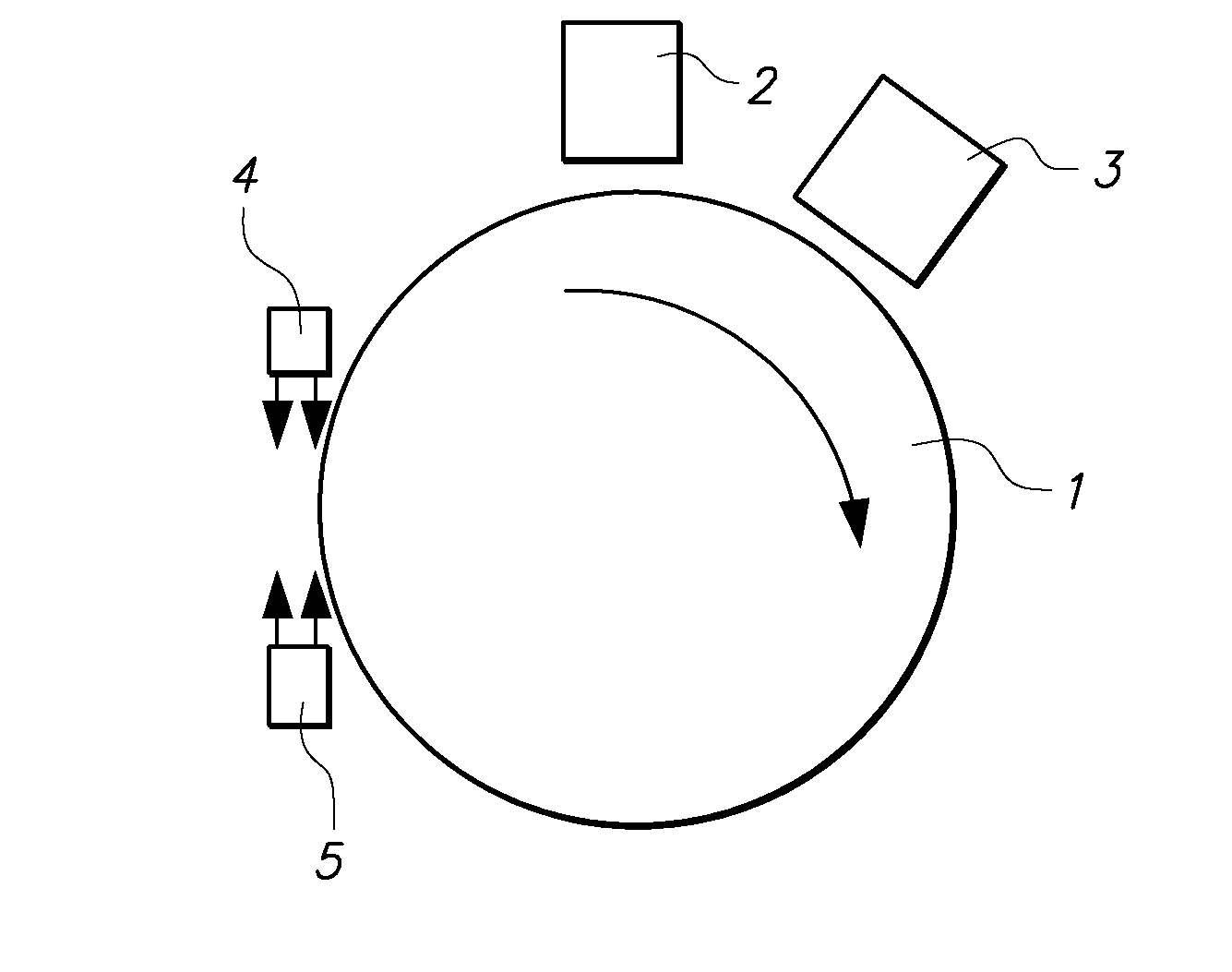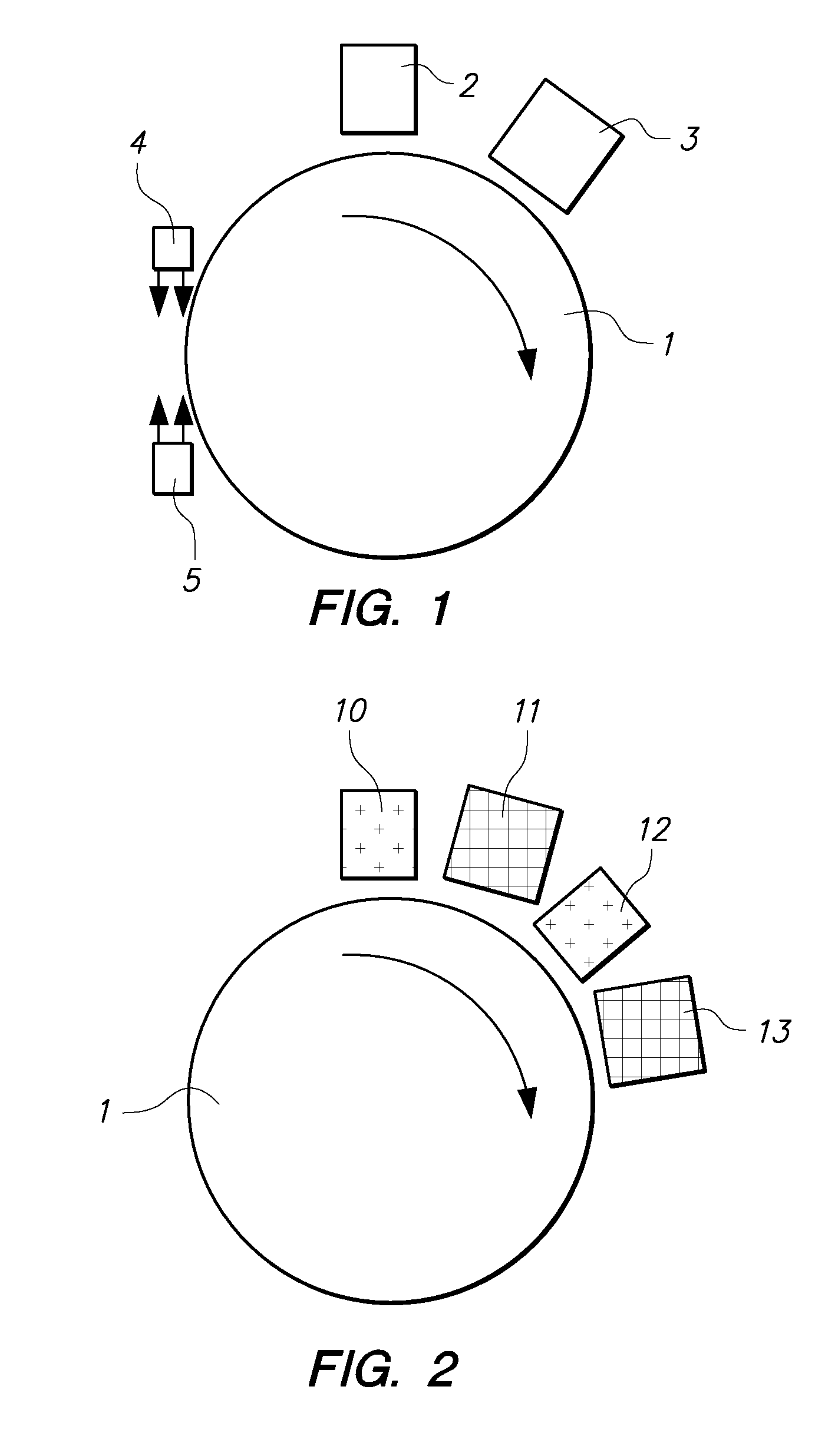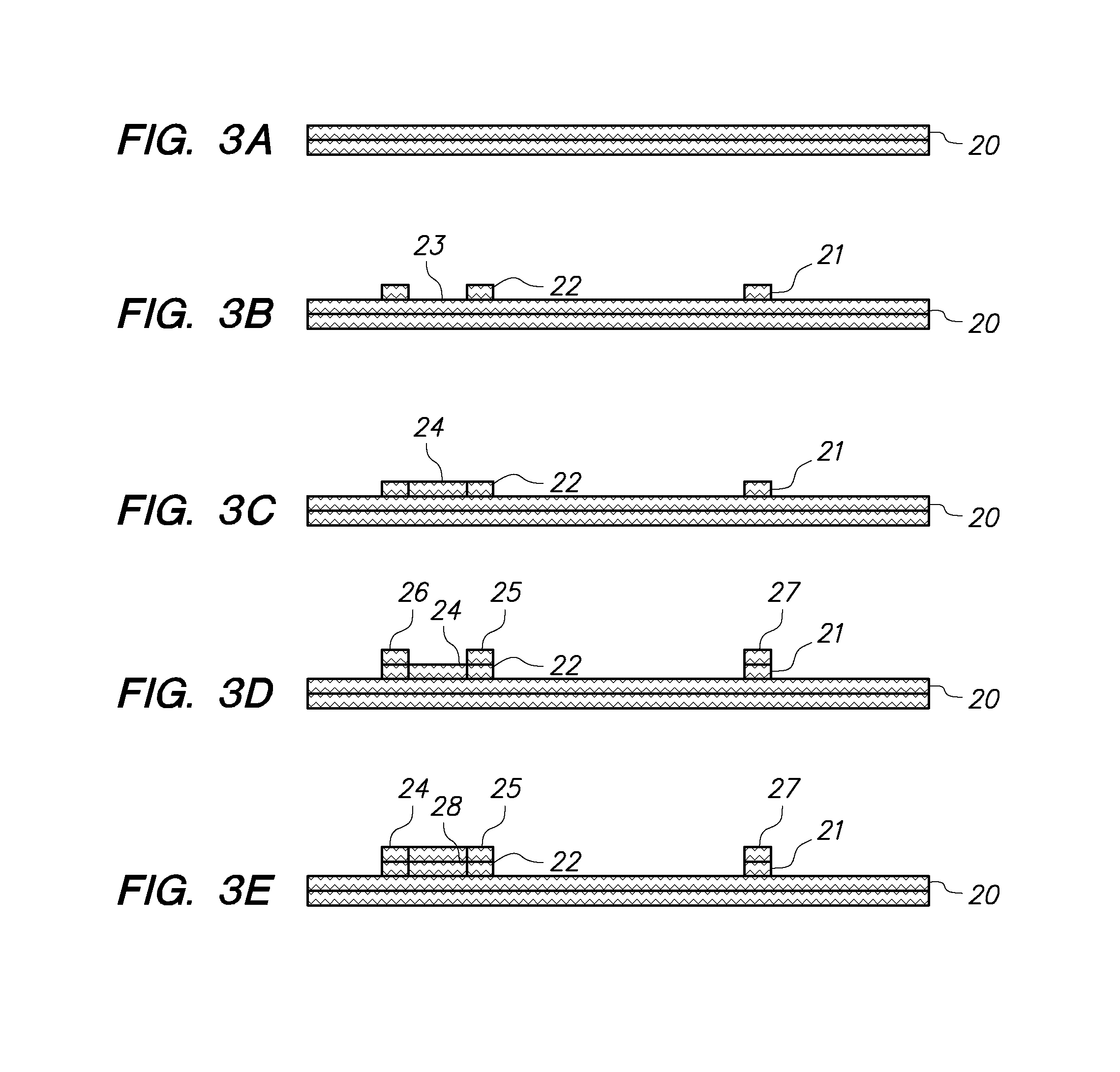Producing a flexographic printing plate
- Summary
- Abstract
- Description
- Claims
- Application Information
AI Technical Summary
Benefits of technology
Problems solved by technology
Method used
Image
Examples
Embodiment Construction
[0038]In the first example of apparatus according to the invention shown in FIG. 1, a rotatably mounted drum 1 is provided on which a printing plate (not shown) is mounted in use. The drum rotates in a clockwise direction in use so as to cause the plate to pass firstly under an inkjet printer 2 having an inkjet print bar which is controlled to print a flexographic material in a predetermined pattern on to the plate; and then under a pin curing device 3, typically a source of UV-C radiation. Further rotation of the drum 1 brings the plate into the vicinity of further UV-C sources 4, 5 which are arranged, as explained below, to irradiate sides of the material printed by the inkjet printer 2 so as to additionally cure the side walls. The drum 1 then further rotates to bring the plate back under the inkjet printer 2 to enable a further layer of flexographic material to be printed on to the previously printed layer. This process continues until the plate has been fully printed at which p...
PUM
 Login to View More
Login to View More Abstract
Description
Claims
Application Information
 Login to View More
Login to View More - R&D
- Intellectual Property
- Life Sciences
- Materials
- Tech Scout
- Unparalleled Data Quality
- Higher Quality Content
- 60% Fewer Hallucinations
Browse by: Latest US Patents, China's latest patents, Technical Efficacy Thesaurus, Application Domain, Technology Topic, Popular Technical Reports.
© 2025 PatSnap. All rights reserved.Legal|Privacy policy|Modern Slavery Act Transparency Statement|Sitemap|About US| Contact US: help@patsnap.com



